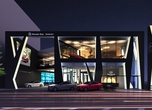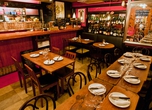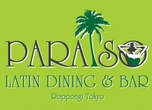Get your copy now
You can now get your copy of Time Out Tokyo magazine delivered - we ship internationally too!
Special feature
Explore
Section
- Around Town (1544)
- Art (330)
- Art & Culture (465)
- Art & Leisure (2)
- Bars (510)
- Bars & Clubs (846)
- Clubs (342)
- Film (591)
- Gay & Lesbian (48)
- Hotels (359)
- Museums & Attractions (486)
- Museums & Sights (7)
- Music (904)
- Performing Arts (83)
- Restaurants & Cafés (2143)
- Shops (2154)
- Sports (7)
- Sports & Fitness (91)
- Tokyo Area Guide (16)
Location
- Central Tokyo (1067)
-
- Akasaka (70)
- Akasaka-Mitsuke (7)
- Akihabara (45)
- Aoyama (184)
- Azabu-Juban (50)
- Bakurocho (10)
- Gaienmae (29)
- Ginza (292)
- Hamamatsucho (22)
- Hanzomon (14)
- Hibiya (21)
- Higashi-Ginza (8)
- Higashi-azabu (1)
- Hiroo (44)
- Ichigaya (10)
- Iidabashi (13)
- Jinbocho (39)
- Kachidoki (6)
- Kamiyacho (13)
- Kanda (34)
- Kasumigaseki (1)
- Kayabacho (6)
- Kioi-cho (1)
- Kojimachi (3)
- Kudanshita (9)
- Kyobashi (10)
- Marunouchi (112)
- Nagatacho (4)
- Nihonbashi (95)
- Ningyocho (34)
- Nishi-Azabu (40)
- Nogizaka (11)
- Ochanomizu (22)
- Odaiba (29)
- Omotesando (151)
- Otemachi (14)
- Roppongi (278)
- Shiba-Koen (11)
- Shinbashi (57)
- Shintomi-cho (1)
- Shiodome (7)
- Shirokane (5)
- Shirokanedai (12)
- Suehirocho (4)
- Takanawa (6)
- Takanawa (6)
- Takebashi (6)
- Takeshiba (3)
- Tamachi (10)
- Tameike-Sanno (12)
- Toranomon (27)
- Tsukiji (53)
- Tsukishima (14)
- Yurakucho (33)
- Northern Tokyo (158)
- Southern Tokyo (152)
-
- Gakugei-Daigaku (22)
- Gotanda (11)
- Haneda Airport (3)
- Heiwajima (2)
- Ikegami (2)
- Ikejiri-Ohashi (14)
- Jiyugaoka (18)
- Kamata (20)
- Komabatodaimae (4)
- Meguro (58)
- Musashi-Nitta (3)
- Musashikoyama (9)
- Nakameguro (60)
- Oimachi (14)
- Omori (6)
- Ookayama (2)
- Shinagawa (45)
- Tennozu (7)
- Togoshi-Ginza (3)
- Yutenji (10)
- Eastern Tokyo (290)
-
- Aomi (3)
- Aoto (4)
- Ariake (8)
- Asakusa (171)
- Asakusabashi (15)
- Hirai (1)
- Horikiri (1)
- Ikenohata (2)
- Iriya (9)
- Kameido (10)
- Kasai (8)
- Kiba (8)
- Kinshicho (13)
- Kita-Senju (5)
- Kiyosumi (20)
- Minami-Senju (5)
- Monzen-Nakacho (6)
- Mukojima (9)
- Nippori (6)
- Nishi-Nippori (9)
- Nishi-Oshima (1)
- Okachimachi (12)
- Oshiage (14)
- Ryogoku (11)
- Shibamata (3)
- Shin-Kiba (10)
- Shin-Koiwa (1)
- Toyosu (12)
- Ueno (63)
- Uguisudani (4)
- Yanaka (27)
- Western Tokyo (945)
-
- Akebonobashi (2)
- Araiyakushi-mae (7)
- Asagaya (24)
- Chitose-Funabashi (2)
- Daikanyama (69)
- Daita (2)
- Ebisu (138)
- Eifukucho (13)
- Ekoda (12)
- Futakotamagawa (21)
- Harajuku (281)
- Hatagaya (3)
- Hatsudai (10)
- Higashi-Kitazawa (1)
- Higashi-Nakano (3)
- Higashi-Shinjuku (9)
- Honan-cho (3)
- Kagurazaka (25)
- Kami-machi (3)
- Kaminoge (3)
- Koenji (60)
- Komazawa Daigaku (7)
- Kyoudo (2)
- Meidaimae (2)
- Mejiro (4)
- Nakai (1)
- Nakano (37)
- Nakano-Sakaue (1)
- Narimasu (1)
- Nerima (3)
- Nishi-Ogikubo (23)
- Nishi-Shinjuku (15)
- Nogata (12)
- Numabukuro (10)
- Ochiai (1)
- Ogikubo (26)
- Okubo (5)
- Okusawa (4)
- Roka-koen (2)
- Sakura-Shinmachi (2)
- Sangenjaya (30)
- Sangubashi (1)
- Sasazuka (7)
- Seijo-Gakuen (3)
- Sendagaya (15)
- Shakuji (1)
- Shibuya (535)
- Shimo-Takaido (2)
- Shimokitazawa (59)
- Shin-Okubo (5)
- Shinanomachi (3)
- Shinjuku (317)
- Shinjuku-Sanchome (26)
- Shinsen (9)
- Soshigaya-Okura (3)
- Takadanobaba (28)
- Takaido (1)
- Umegaoka (1)
- Wakabayashi (2)
- Waseda (10)
- Yoga (3)
- Yotsuya (6)
- Yotsuya-Sanchome (12)
- Yoyogi (15)
- Yoyogi-Hachiman (31)
- Yoyogi-Uehara (16)
- Tama Area (101)
- Out of Tokyo (154)
Good for
Series
- 10 to try (1)
- 5 to try (12)
- Area guide (7)
- Competitions (4)
- Kyoichi Tsuzuki (5)
- Photo of the day (68)
- Public eye (45)
- Ramen (16)
- Style of the Day (901)
- TOT Video (2)
- The Hot Seat (9)
- The best of Tokyo (59)
- Things to Do (19)
- Things to do in Shinjuku (1)
- Tohoku Update (7)
- Tokyo International Film Festival (1)
- Tokyo area guide (20)
Mobile edition

http://www.timeout.jp/mobile
http://www.timeout.jp/s
Time Out
Cafe & Diner

Time Out Café & Diner is the sophisticated Ebisu area's newest global meeting place.
Time Out Guide Books

Discover Tokyo's best shopping, restaurants, nightlife with Time Out GuideBooks.
Man Ray: Unconcerned But Not Indifferent
Discover more of Japan with UnionPay
100 best shops in Tokyo
Most viewed
Most recent blogs
Style of the Day
Time Out Tokyo newsletter
Our newsletters get the best of Tokyo delivered straight to your inbox.
Recent features / venues
- Pushing boundaries with TodaysArt
- Tokyo's best outdoor art
- The art of sento
- Giveaway: 'L'art de Rosanjin'
- Where art meets skateboarding
- Six ways to discover the art of Japanese cuisine
- Eastern Tokyo's top 15 galleries
- 61 things to do at Tokyo Creative Weeks
- Japan’s 10-year-old art prodigy
- Tokyo Creative Weeks
Connect with us
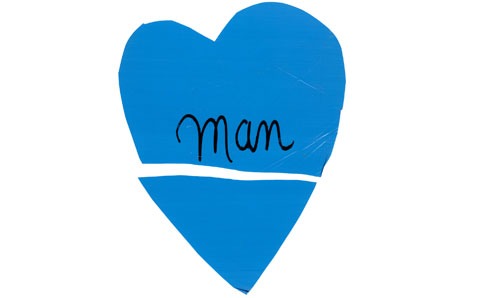
Time Out says
Even amongst those who know little of art, there are probably very few people who haven’t heard the name Man Ray. Man Ray lived his life between America and France – to both escape the ravages of war, and to seek a suitable artistic environment in which to work. In his later years, he made Paris his home and went on to gain true international recognition as an artist. Man Ray is best known for his photography, but in ‘Man Ray: Unconcerned But Not Indifferent’, the National Art Centre, Tokyo will exhibit many works which demonstrate the great range of his artistic output, including paintings and sculpture.
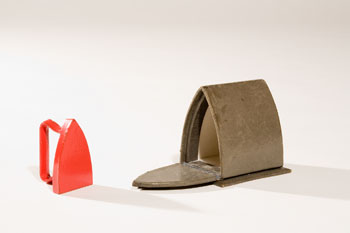
Le fer rouge
In his youth, Man Ray started by making his living as a commercial photographer, while also working towards his dream of success as an artist. Before long he developed his own characteristic style of expression using specialist photographic techniques, like his ‘rayograph’ photograms and solarisation. His work attracted high praise from both the Dada and Surrealist movements, but Man Ray himself aligned himself with neither group. For Man Ray, the concepts behind creative work were more important than the means of expression.
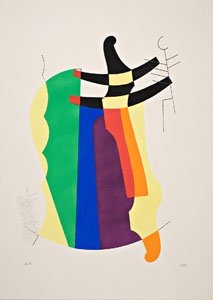
Legend (from Revolving Doors)
Having made a three dimensional work, Man Ray would make a record of it by photographing it. Having taken a work apart after shooting it, he was known to remake and duplicate it using the same motifs over and over again. Using the sense and techniques of design he most likely developed in his early experiences working in advertising graphics and design, there is a beautiful elegance in the expression of Man Ray’s work. It is this refinement that has led him to be so much more well-known than his Dadaist and Surrealist contemporaries, and which has made his works more broadly accepted.
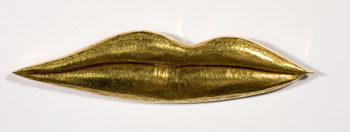
Untitled (Gold Lips)
Even if you see one of the works on display and think it’s a little difficult to understand, there’s no inherent need to think too deeply about it. Man Ray’s very appeal lies in the fact that you can enjoy his art by simply immersing yourself in its ever universal beauty.
Tags:
Details
Open Wed July 14-Mon Sept 13 Closed on Tue
Time 10am-6pm
Admission ¥1,500 (¥1,300 adv); ¥1,200 university students (¥1,000 adv); ¥800 high school students (¥600 adv); junior high school students and younger, Free
URL www.man-ray.com/
Venue The National Art Center, Tokyo (NACT)
Address 7-22-2 Roppongi, Minato-ku
Transport Nogizaka Station (Chiyoda line), Roppongi Station (Oedo, Hibiya lines)
Map
Restaurants & Cafés near The National Art Center, Tokyo (NACT)
Mercedes-Benz Connection
The second incarnation of Mercedes' Roppongi flagship store sits just up the road from the old ...
Shonzui
Tokyo's first bar to specialise in natural wines is still one of its best. Shonzui opened in ...
Wine & Music Cadenzare
Found in a Nishi-Azabu basement, this classy bar combines excellent wine with live piano music, ...
Paraiso
After two decades of hip-shaking action at the heart of Roppongi, Salsa Sudada fell afoul of ...
Outback Steakhouse
When nothing but steak will do, Outback is the place to go. The Roppongi branch of this ...
- About Us |
- Work for Time Out |
- Send us info |
- Advertising |
- Mobile edition |
- Terms & Conditions |
- Privacy policy |
- Contact Us
Copyright © 2014 Time Out Tokyo












